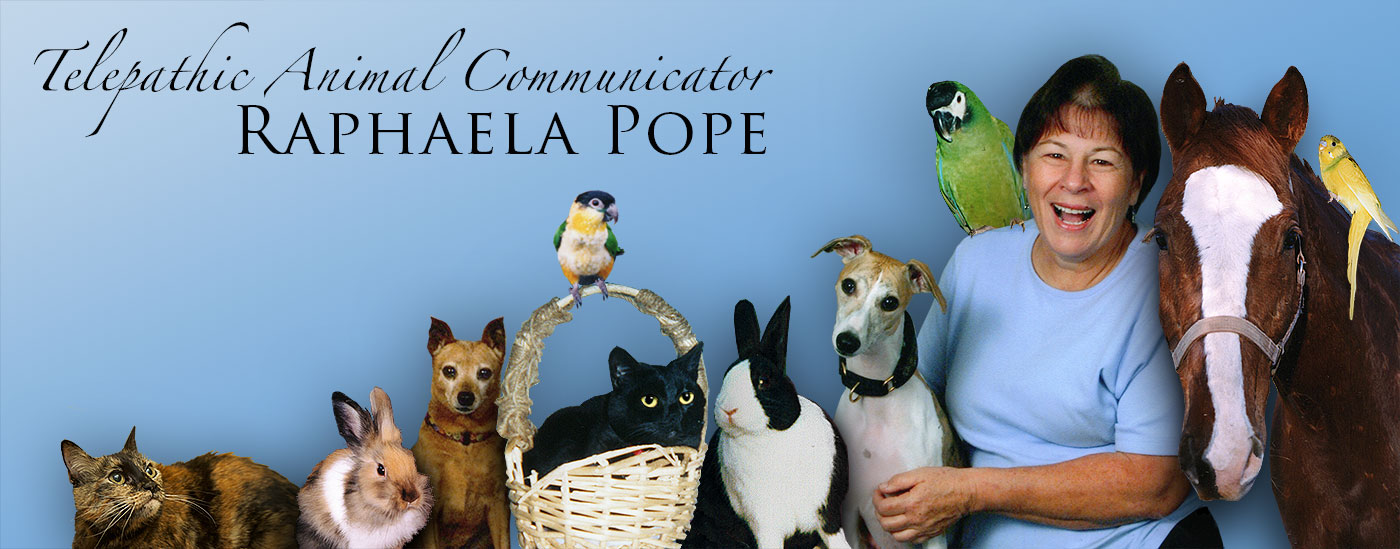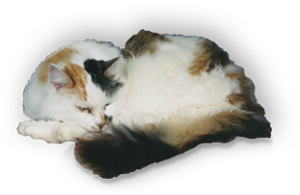Prepare for a Consultation
I am often asked by clients what they should do before a workshop or consultation. First, I recommend that you read "Animal Talk" by Penelope Smith. It is an excellent basic primer on animal communication. It is not expensive, and it's a "fast read". I keep copies on hand in my office and will be happy to send you one. It is also sold in many bookstores.
Second, keep an open mind. Generally if one can conceive of the possibility of telepathic communication, one is already pretty open. But what might you think when your budgie starts advising you on human child-rearing practices? Or your cat suggests a certain meditation technique? Both of these things occurred in recent consultations, and fortunately, the humans involved were able to hear the animals' suggestions with good grace.
Do not think that because your cat, bird, fish, lizard, chinchilla or chicken is small in stature that his or her world view is necessarily narrow or limited. I have talked to chickens, chinchillas and parakeets that are very expanded beings with great lessons to offer, and a wonderful understanding of the interconnectedness of all beings.
Third, it is often good to clearly formulate a few questions before the consultation actually stars. This is easy to do. think about what the problem or situation is you are calling about. why is your cat spraying in the house? Or why is your horse protective of her hind legs with the horseshoer, but not with you?
I get the animals's point of view on the situation and together we come up with strategies or changes acceptable to all parties. Your animal buddies are usually thrilled and excited at the opportunity to discuss the situation, and sometimes their behavior changes immediately.
HERE IS ONE EXAMPLE. I was asked to do a consultation with a dog named Thor who had lived most of his life in the country in Idaho. When Thor was ten years old, he and his person, Joan, moved to a suburban area of California, on a lake, where all the residents lived in houses very close together, and had boats docked on the lake in their backyards. Thor barked constantly at any boat on the lake, and at joggers on the sidewalk in front of the house. He was driving his family crazy, and upsetting the neighbors. Thor also refused to be brushed, and his dense coat had gotten very shaggy and matted. Also, Thor had gotten rather slow moving and arthritic at ten, and his people, who walked for exercise, were impatient with his slow pace. thus they tended to leave him in the yard, rather than taking him with them when they walked.
When I talked to Thor and got his perspective on the situation, he told me that he felt the lake and the sidewalk belonged to him and his people. He felt it was his job to protect the property from other. When I explained that the lake and sidewalk were shared by all the home owners, he agreed not to bark at boats on the lake.
However, he still felt strongly that it would be best if the joggers used the other side of the street, rather than the sidewalk right in front of his house. His person and I explained that we could not require the joggers to change their route. Thor told us that he would try to limit his barking to one or two warning barks, instead of the frenzy he had been doing. Joan thought that would be fine.
Consultations
⇢ Arrange a consultation
⇢ Prepare for a consultation

